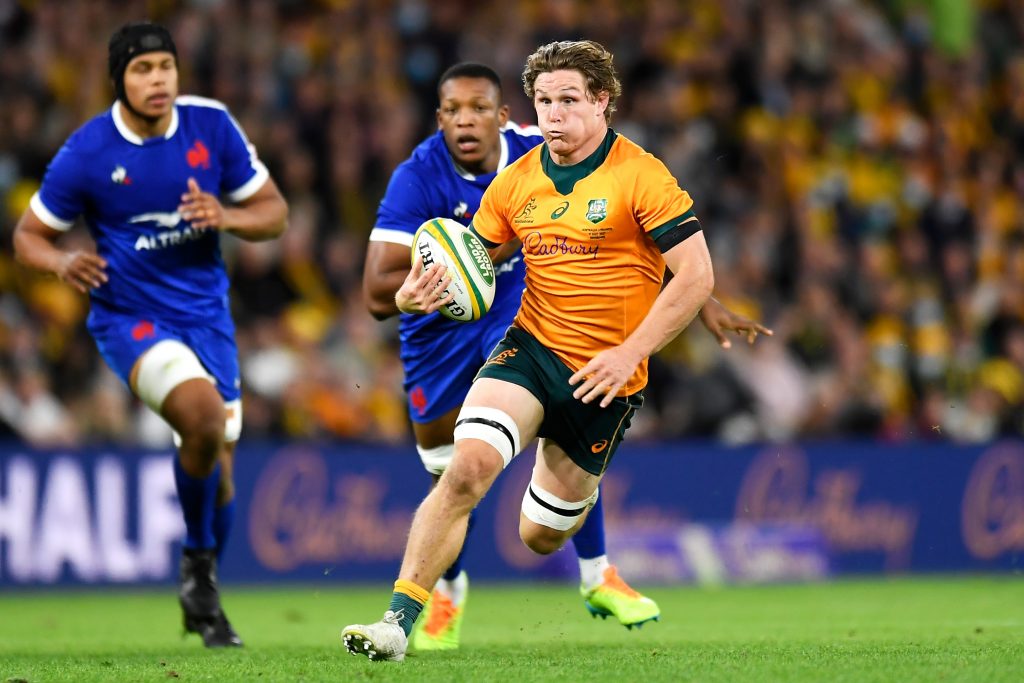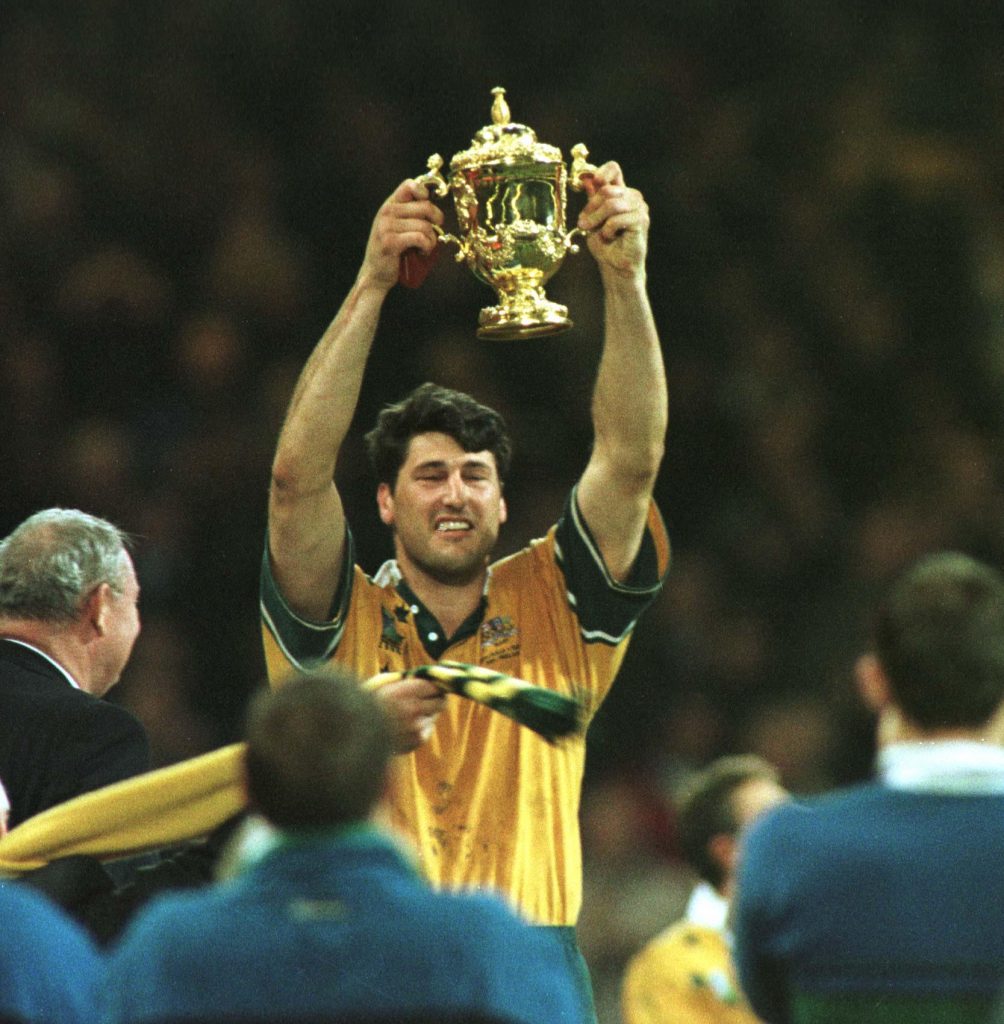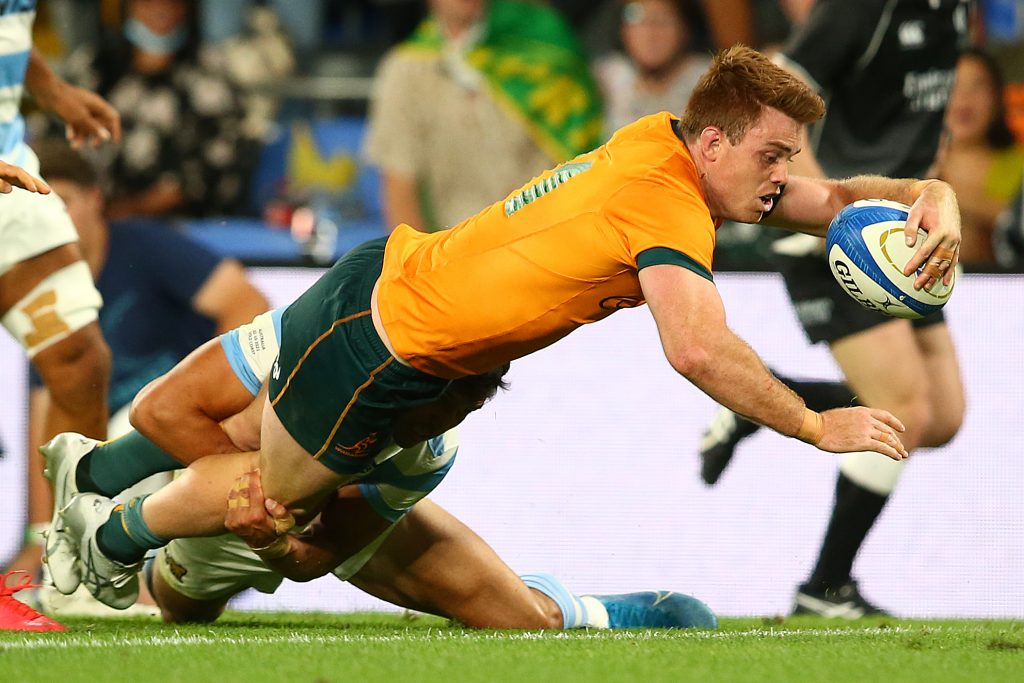
Green and Gold Rugby: A Brief History of the Wallabies
As the Brave Blossoms prepare to take on Australia’s Wallabies in Oita on October 23, we take a closer look at the two-time World Champions to give our Japanese fans some insight into the history of Australian rugby, its Golden Generations of the 80s, 90s and early-2000s, and the style of play which the Wallabies pride themselves. We will also look at the current team and pinpoint some of the superstars that, if selected for the match, will provide the biggest threat to the Brave Blossoms.

History and Place in Australian Sport
Rugby has been played in Australia since the mid-1860s, however it wasn’t until 1899 that the national team, the Wallabies first played. The team was formed to play a touring side from the Great Britain, and now 122 years later, the Wallabies are a much-loved feature on the Australian sporting landscape.
Traditionally strong in the states of New South Wales and Queensland, rugby has grown its appeal throughout the country, with healthy local amateur competitions in all seven states and territories, and five professional Super Rugby teams based in Sydney, Brisbane, Canberra, Melbourne, and Perth.
While Australia has always been considered among the leading rugby nations, it’s seen a number of ‘Golden Generations’ in which the Wallabies played arguably some of the best rugby in the world.
The 80s, 90s and early-2000s – The Golden Generations
From the 1980s onwards, Australian rugby developed a more consistent level of performance which saw it emerge as a serious force on the world stage. In 1984, the Wallabies achieved their first ever Grand Slam, defeating England, Ireland, Scotland, and Wales, as well as a strong Barbarians side, on their tour to the UK and Ireland. This success brought a new level of confidence and belief to the team and resulted in far greater awareness and appreciation of rugby among sports fans back in Australia.
In 1986 the Wallabies also won their first ever away series in New Zealand, famously winning the third and final test 22-9 at Eden Park, the All Black’s Auckland fortress. To put the importance of this victory into perspective, Australia have not won at the venue since 1986 and had only ever beaten the All Blacks there on three prior occasions. One of these was the 30-16 win in 1978 when Wallabies’ Number Eight Greg Cornelson, father of current Brave Blossoms’ flanker, Jack Cornelson famously scored four tries.
With their newfound belief and form, Australia entered the next decade by winning their first Rugby World Cup in 1991, against England at Twickenham. They were less successful as defending World Champions in 1995, losing 27-18 to hosts and eventual Rugby World Cup winners, South Africa in the opening match of the tournament. England were then able to take revenge for their 1991 loss by beating Australia in their subsequent quarter final 25-22, sending the Wallabies home early from South Africa.
The Wallabies rounded off the 90s in great style by winning their second Rugby World Cup against France in Cardiff, in 1999. While excelling in all aspects of their game, it was their defence that was a standout for this World Championship team. Throughout their seven matches, they scored 221 points, conceded only 73 and had only one try scored against them, during their match against the USA.

In 1998, the Wallabies also started their longest ever winning streak for the Bledisloe Cup, the trophy contested between New Zealand and Australia since 1932. Australia held the trophy for five consecutive years between 1998 and 2002, a period which saw the Wallabies enjoy domination over their neighbours and biggest rugby rivals. However, as any All Blacks supporter will point out, New Zealand won the trophy back in 2003 and have held onto it to this day, bringing 19 years of pain to Wallabies supporters everywhere.
In 2003, Australia hosted the Rugby World Cup, with a barnstorming England team the hot favourites to win the title. Following an epic semi-final in which the Eddie Jones coached Wallabies decisively beat a much-rated All Blacks side 22-10, Australia made it to the final against England. Coming into the match as underdogs, the Wallabies took the fight to the English and scores were tied 14-14 at full time. The match was famously decided by a Jonny Wilkinson drop-goal in extra-time and England were crowned World Champions for the first time.
Throughout the early to mid-2000s, many Wallaby legends of the 1990s began to retire, with players like John Eales, Toutai Kefu, Owen Finegan, Matt Burke, Tim Horan, Steven Larkham and George Gregan hanging up their boots for the last time. As this generation of players moved on, the Wallabies were unable to maintain the same level of consistency and results.
The Wallabies again tasted success in 2011, winning the Tri Nations and in 2015 won the Rugby Championship and made it to the final of Rugby World Cup in England, losing to their arch-rivals New Zealand.
The Wallabies Today
In 2021, the Wallabies are showing some early signs of real promise. Following a 2-1 series win at home against France and coming second place in the Rugby Championship, with double victories against both South Africa and Argentina, Australia make there way to Japan off the back of a four-match winning streak and with a new sense of belief and confidence. The Wallabies will have momentum on their side and be fully battle hardened after playing 10 consecutive matches against France, New Zealand, South Africa, and Argentina.
For Wallabies fans, whether this is the start of a new era of sustained success remains to be seen. How Australia fare in Oita on October 23 and in their onward tests against Scotland, England, and Wales, will give a sense of where they stand and if they are already shaping up to be serious contenders for France in 2023.
The Wallabies Style of Play
Much like the Brave Blossoms, the Wallabies pride themselves on playing fast, running rugby, and keeping the ball in play as much as possible. During the golden years of the 80s, 90s and early 2000s, they led the world in almost every facet of the game. They combined a solid forward pack, who were not only masters of the set piece, but were also highly skilful in open play, with a backline stacked with big, fast, confident, and creative players.

With Wallabies coach Dave Rennie in his second year leading the team and following their recent run of successes, which have seen them rise to third place in the World Rugby rankings, Australian rugby fans are quietly confident that the team will once again emerge as a dominant force on the international stage.
Players to Watch in Oita
Michael Hooper:
At 29 years of age, the evergreen Hooper became the most capped Wallaby Captain in 2021 with 62 of his 115 test caps leading the team. Supported by a more robust and balanced forward pack in 2021 and after having played a season with Toyota Verblitz in Japan’s Top League, Hooper is playing arguably the best rugby of his career.
Taniela Tupou:
At 135 kilograms, the 25-year-old ‘Tongan Thor’ is literally one of the giants of international rugby. Rated by many pundits as the world’s best tighthead prop, Tupou compliments his immense scrummaging ability with silky-smooth hands and feet, and is often seen out in the backline playing as if he was an inside back.
Andrew Kellaway:
A playing sensation as an Australian Schoolboy, the 25-year-old wing and fullback has finally brought this early promise into the national setup after being capped this year. With 8 tries in just 9 tests, Kellaway has quickly established himself as a key weapon in the Wallabies backline.
Samu Kerevi:
Playing for Suntory Sungoliath in Japan’s Rugby League One, 28-year-old Kerevi is no stranger to Japanese rugby fans. At 108 kilograms, this hard running centre is a handful for any opposition, either with the ball in hand, as a decoy runner or as a fearsome defender.
Tate McDermott:
With a pass like a bullet and a solid running game off the back of the breakdown, McDermott is an exciting new scrum half with a big future. At 23 years old and with a Super Rugby AU 2021 title with the Queensland Reds, he will be looking to make the Wallabies number nine jersey his own during the upcoming tour to Japan and the UK.